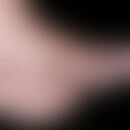Biographical detailsThis section has been translated automatically.
(¤ 1880, † 1926) Austrian dermatologist. Born in Schärding am Inn as the son of a pharmacist. Attended grammar school in Kremünster in Upper Austria, studied medicine at the University of Graz from 1899, graduated in 1904. 1905 initially trained in pathology. 1906 dermatological assistant under Ernest Finger at the Vienna Dermatology Clinic. 1913 Habilitation. 1918 Appointment as associate professor. He turned down offers to take over dermatology chairs in Freiburg (1915) and Basel (1916 and 1921). Kyrle remained loyal to his university until his early death from renal cell carcinoma in 1826.
Field(s) of research: His main areas of interest were general pathological anatomy, dermatology and syphilis. For a long time he was scientifically concerned with the histopathology of the testis and epididymis. 1916 First description of hyperkeratosis follicularis et parafollicularis in cutem penetrans Kyrle (rare, generalized keratinization disorder of unexplained etiology, doubted by many as an entity). During the First World War, Josef Kyrle dealt with variola and typhus and began his investigations into syphilis in 1917. He recognized the importance of fever for syphilis therapy (non-specific healing factor) and introduced malaria treatment in early stages. K. also made a name for himself with several works on cerebrospinal fluid. His experience was based on around 10,000 lumbar punctures on 3,500 patients. His friendship and close collaboration with the Viennese neurologist Julius von Wagner-Jauregg ultimately led to the treatment of neurosyphilis with malaria pathogens. In 1927, von Wagner-Jauregg was awarded the Nobel Prize for this therapeutic approach.
Further fields of activity: skin tuberculosis, sarcoidosis of the skin; psoriasis vulgaris and leprosy (transmission experiments on monkeys).
Josef Kyrle was buried in 1926 in the Döbling cemetery (group 8, number 2). Josef-Kyrle-Gasse in Vienna-Hietzing was named after him in 1932. The small alley connects Biraghigasse with Wolkersbergenstrasse in Vienna's medical district.
LiteratureThis section has been translated automatically.
- Kyrle J (1916) On an unusual case of universal follicular and parafollicular hyperkeratosis (hyperkeratosis follicularis et parafollicularis in cutem penetrans). Arch Derm Syph 123: 466-493







